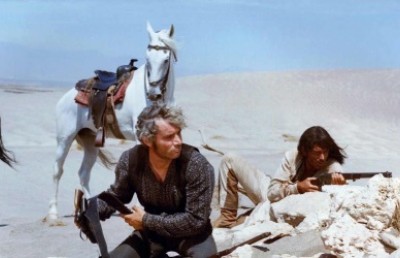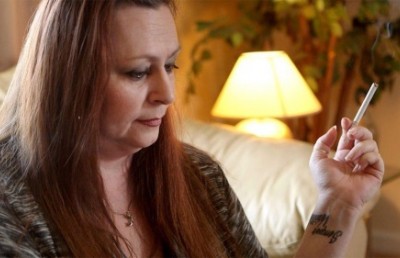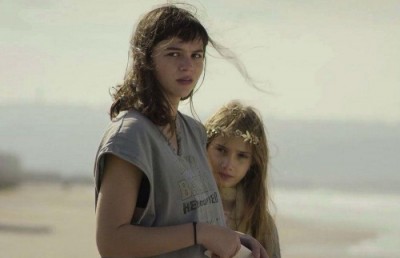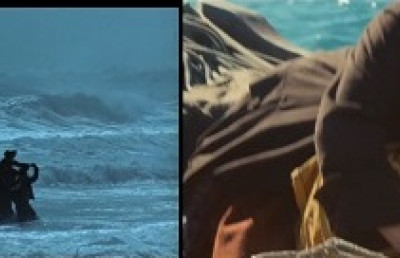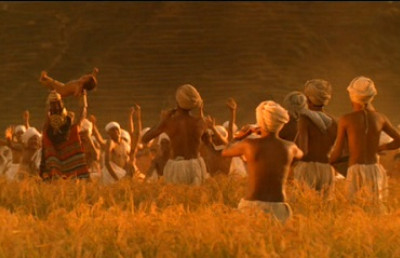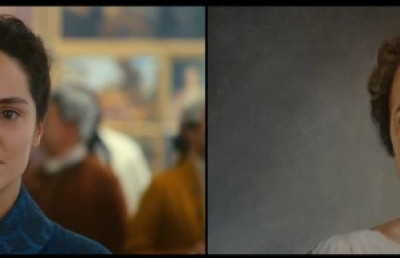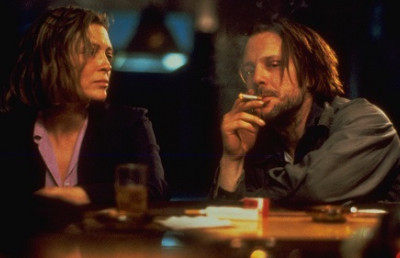FNC 2017: Another Year
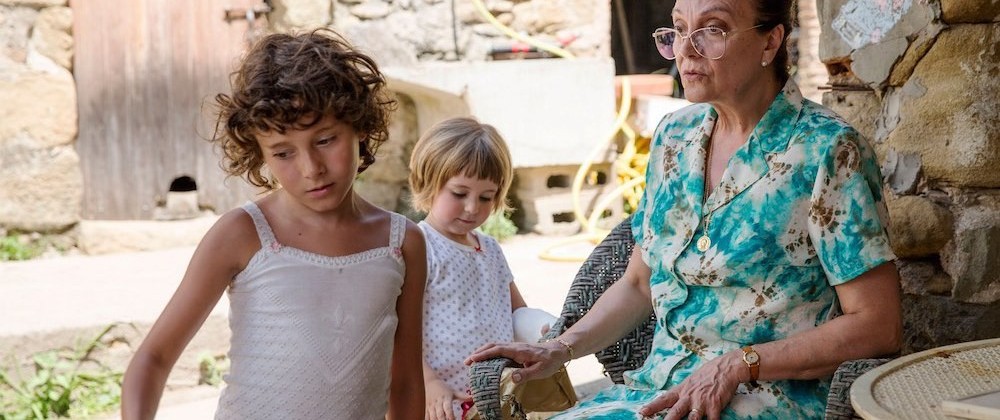
Film festivals can’t help but skew your view, force you to emit pronouncements on the state of cinema or the death of this and that. Mainlining 40 movies in 10 days will do that to you. And Festival du nouveau cinéma (FNC from now on), with its identity lodged somewhere at the nexus of new (experimental or simply young) and more established (masters and festival-circuit mainstays) cinema is particularly prone to eliciting such opinions from its patrons. Here one can be disappointed or delighted in both avant-garde or prestige cinema, young upstarts or ossifying masters.
I talk of identity since FNC has seemed in the last decade to be in search of redefinition. Big festival movies had seemed to take more and more place in the schedule perhaps because of the breakdown of the FFM or the less adventurous local film exhibition landscape pushing art cinema, even from big names, more and more towards the realm of the event, the festival. But in the last two years FNC does seem to want to try to strike more of a balance between being a place where one can see the new film from arthouse mainstays and the place for new cinema. Its avant-garde section “Les nouveaux alchimistes” dedicates itself to showing films that attempt to push cinematic language in new directions (even if those films can be as prone as others to calcify into rote tropes). The festival also offers up a considerable amount of its schedule to films from debuting or young directors as well as films from women in and out of the global North. This year for example gives us not one but two genre films from women directors of developing Asian countries (more on those later) as well as films from Latin America, the middle east and Africa.
But what of the movies, and movies there were. I started my 10 day journey through cinema in 2017 with two disappointing works from enshrined masters (not out of conservative tastes, I hope this report will attest, but simply due to the vagaries of scheduling), as their positioning in the “Les incontournables” section suggests. The first of those, Frost, is the new film from Lithuanian master Sharunas Bartas, a filmmaker of stillness, silence and bodies who seems lost in the digital era, his newer films coming off as weightless, empty against his solemn masterpieces like Corridor. His new effort, a meditation on activism and responsibility in Eastern Europe in the wake of Maidan, follows a Lithuanian couple as they try to bring supplies to a far off Ukrainian military outfit. The film, like its characters who stumble into their quest almost through inertia, is slow, meditative, questioning of places and bodies, but whereas in Bartas’ earlier films images were anchored in a powerful sense of the material (both in the grain and the weight of the image), here everything feels surface-level, cursory. Bartas’ usually strong visual sense is flattened against anonymous landscapes and empty gazes. An extended sequence at an hotel exemplifies this in the ways it perpetuates all the clichés of European co-productions i.e. French actors (Vanessa Paradis among them) speaking in English, vague pronouncements on European unity and inequalities, bland, featureless spaces (is there anywhere more anonymous than an hotel room). Like this scene and those movies, Frost winds up saying little about a lot, as if in trying to encompass everything it loses any specificity that might have made it engaging.
Claude Lanzmann’s Napalm, however, is just pure train wreck, an arrogant, self-centered, leering documentary that tries its best to taint Lanzmann’s previous masterpieces like Shoah. Ostensibly about Lanzmann’s aborted afternoon of love with a North Korean nurse in Pyongyang in the 50s (which he assures us is a tale of the utmost importance), the film is composed of two major parts; a modern tour of North Korea where an elderly Lanzmann makes special note of the physical beauty of all the young female guides that then switches to a long reminiscence on the director’s almost love story told almost entirely in a long monologue delivered directly to what seems like a consumer grade digital camera given the amount of ghosting in the image. You’ll remember of course that the long monologue to camera was the primary form of Shoah, which already places Napalm’s romantic troubles in a somewhat queasy place within Lanzmann’s œuvre, but the esteemed director sees fit to directly quote a line from Shoah in a scene where he brings us to the place of their rendezvous. “Das ist der platz”, he says with a smile. You’ll also remember that Shoah was a film about the holocaust and that Napalm is a film about a French guy remembering in grandiloquent details the time he almost had sex with a North Korean woman. All in all, not a good look.
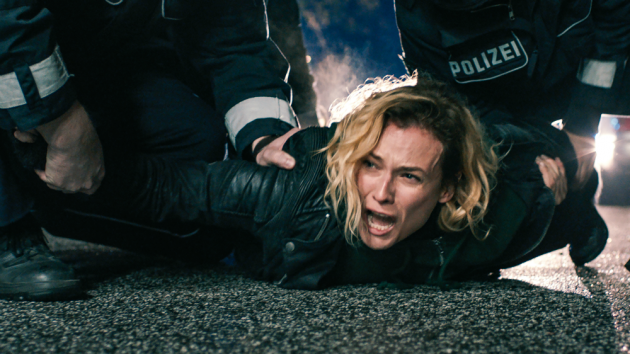
In the Fade
Why not get through all these bad films in one go? In the Fade, Fatih Akin’s newest film, is also quite hubristic in its monumentally dumb, juvenile ending which retroactively destroys all the good will the rest of the film might have garnered. Telling the story of a German woman (Diane Kruger, perhaps the only thing to recommend about this) before and after her son and husband (the son of Turkish immigrants) are killed in a right-wing terrorist attack, the film splits itself in three parts. The first part focuses on Kruger’s life before the attack and her bottomless grief following the tragedy. The problem is that Akin never seems that interested in his characters as real people, preferring to adorn them in his usual milieu of drugs and tattoos for little discernible reason. It all winds up feeling like the first part of an horror film, what should be joyous moments of family life becomes mired in its portentous tone. Kruger sells the emotions, but the structure around her wounded, nervy performance is thin and crooked, with Akin’s attempts at edginess (Jacques Rivette would have had a field day on a particularly egregious travelling to a pair of slit wrists in a bathtub) come off as cheap and exploitative. Mind you, I don’t hate exploitation, but when the movie tries to sell itself as a sobering look at right-wing extremism in Europe, I wince a little. The second part is the most interesting and entertains by sticking close to the conventions of the courtroom drama. People shout, speeches about evil are declaimed, legal hand-wringing exasperates. Nothing new, but well done nonetheless. The third part, a vigilante drama, is just immensely misconceived, like the director polled a group of moody teenagers for the most edgy ending they could think of and decided to roll with it. The less said about it the better.
Less unpleasant, but still far from the heights of his best films is Andrey Zvyagintsev’s Loveless, which finds the Russian master director having fully completed his metamorphosis from Tarkovsky student to dour chronicler of his society’s ills. The problem is that he seems to have lost all his subtlety in the process with eye-rolling blunt metaphors and borderline misogynist criticism of modern Russian women that seems to limit itself to the fact that they take too many selfies. The story of feuding parents and their runaway son wants to speak to intergenerational conflicts and of the soul of Russia, but it lacks nuance (which was perhaps the goal, but nonetheless disappoints). Zvyagintsev is still an able stylist with an eye towards blocky composition and portentous travelling shots, although it seems he falls into a common trap. It’s difficult when you’re trying to depict society as shallow and surface-level to not also come off as shallow and surface level and so the early urban scenes set in anonymous modern building and apartments, feel lifeless and slickly empty. The film does come alive in its second part when the search gets on the way and Zvyagintsev’s camera is free to roam forests and dilapidated buildings anchoring his criticisms in more concrete realities. A late turn towards the metaphysical will perhaps split audiences, I felt it was too little too late, a last-ditch effort at transcendence that clashes awkwardly with the materialism of the early section.
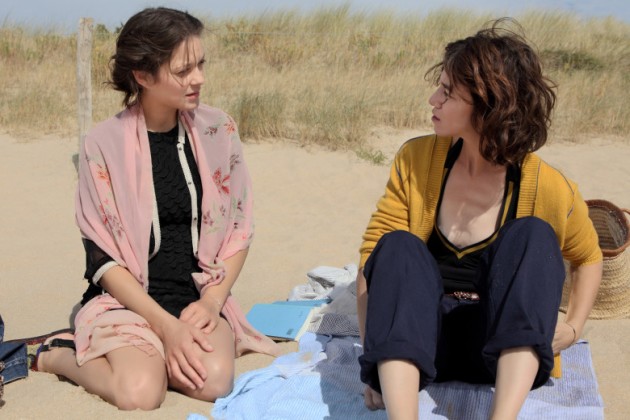
Ismaël’s Ghosts
Thankfully not every film from aging masters proved to be deceptions. Ismaël’s Ghosts, the latest from flight of fancy-er in chief Arnaud Desplechin, is another opus in the sprawling sage of the Dedalus and the Vulliards (someone should really map out Desplechin’s purposefully convoluted genealogy one day) and perhaps his most nakedly honest treatise on his life as an artist. Most of his films have had an air of autobiography (his native Roubaix makes another appearance here), but it’s the first time he’s made a film about a filmmaker (his usual muse Mathieu Amalric, here shining as a manic-depressive artiste maudit). Desplechin is a director of limitless imagination and interests, the quintessential “throw everything at the wall and see what sticks” guy. His films crackle with unbridled freedom and enthusiasm at the possibilities of cinema, one scene can be a film within the film, the next a monologue on the pains of loss, followed by an excursion to Tel-Aviv or Tajikistan, the ostensible plot (Amalric’s long presumed dead wife comes back to rock his life and his new relationship) is dropped at a moment’s notice to follow more fruitful avenue. The effect is not confusion or anger at the pirouetting story, but more of an elation at witnessing an artist following his muse to such a degree. Because in practice, it reads somewhat like Desplechin has mixed three different screenplays, taken out the boring parts to leave only the lyrical (some wonderful dialogue as always), the fanciful (the aforementioned structure) and the ephemeral (beautiful images of pain, but also of creation) and willed a satisfying thematic link between all the disparate scenes to deliver his best film since A Christmas Tale.
Also from a French master who has been given to flights of fancy as of late, comes perhaps the unlikeliest film of the festival, Jeanette, a rock musical about the early life of Joan of Arc. It is with pleasure and a certain level of befuddlement that we have observed the transformation of Bruno Dumont from transcendental dourness to comedic transcendence, and Jeanette sees him continue on this path. If Li’l Quinquin was him refashioning The Life of Jesus into a rural comedic thriller and Slack Bay was his take on his own L’humanité then Jeanette is most reminiscent of Hadewijch both in its themes of religious engagement and materialist convictions. And this is a materialist film, the humour, the faith, the transcendence all come from the simple fact that real bodies existed in a space and a camera captured them. Dumont, a great director of non-actor, luxuriates in the unrehearsed awkwardness of his actors, each flubbed line, sly smile and moments of realness working as an encomium to the gentle humanity of both character and actor (indivisible in Dumont’s eyes). Even if the film is not always successful or might test the patience of some (everything is sung live on location, the choreography can charitably be described as naive), this simple act of faith from Dumont, that all a film needs to be beautiful, to commune with god, is a patch of land in northern France and animated bodies, marks the film as a triumph. The fact that it’s often riotously funny (we might have found France’s next best trap rapper), breathtakingly shot and genuinely moving (a shot where we hear the actress’ heartbeat after an intense choreography is astounding in its intimacy) also helps.
Hong Sang-soo, Korean festival darling, is also present with two films (his third of the year, On the Beach at Night Alone seems destined to remain unavailable here) the charming Claire’s Camera and the deceptively simple The Day After. For the fans, know that both films are pure third wave Hong (what I would call his recent women-focused work since about Nobody’s Daughter Haewon), offering the peculiar pleasures that the boozy director has been delivering pretty much annually for the last 20 years. For the uninitiated, I can only recommend that you take the leap into this filmmaker’s endlessly enjoyable and perceptive body of work. There a few more comforting feelings in a cinephile’s year than catching the new Hong Sang-soo. Claire’s Camera is the breezier of the two, structuring itself around a series of encounters at the Cannes Film Festival, between Korean film people and a happy-go-lucky French amateur photographer (Isabelle Huppert, outstanding as always). Drinks are had and awkward conversations are pursued in this sunny tale of an employee’s (Kim Min-hee, true and graceful in everything) sudden dismissal and the layers of lies, ego and arrogance beneath. Hong’s camera, like Claire’s (or the liters of alcohol regularly consumed), gets at the heart of people, his style which at first might seem studious or repressed (the zooms make a comeback here!) uncovering the layers of artifice and niceties to hone in on the humans hiding behind the polite laughs and small talk. The film also contains a scene for the ages where an arrogant film director berates Kim’s character for her short pants. Hong, again, masterfully exposes the misplaced machismo and self-entitled neuroses present in so many of his male heroes and the quiet strength of his heroines.

The Day After
The Day After, more of a straight drama and the film liable to shed more ink, is also another excellent entry in the Hong canon. The story of an unfaithful book editor and his new employee (Kim Min-hee, again luminous in her strength and resolve) who gets dragged into his marital drama, the film is deceptively simple in its structure (a sort of two-step of flashbacks and present tense scenes), but as always offers endless possibilities for interpretation. My personal theory is that Hong, in his doubling up of time frames (double identities and performance are also themes), is linking memory with melodrama (past scenes have a deliberately more dramatic tone) and the present with banal “realism” until those two switch and place the male character in front of his own prosaic nature, a failed romantic who will lie and hurt others to conserve his shaky status quo. Of course, each viewing brings a new perspective, new wrinkles and nuances that deploy beneath the unassuming veneer of Hong’s films, opening them up considerably. I would be remiss if I did not mention the gorgeous black and white cinematography. A tête-à-tête in a subway car aches with raw immediacy, and a lonely taxi ride in snowy Seoul pulses with emotions in what might be Hong’s most visually breathtaking film to date.
But I’ve been talking about known quantities for too long now, what of the new, what of the young (although Desplechin’s film was perhaps the “youngest” film I saw at the festival, so go figure). FNC saw a certain number of first works from eager directors, including standout works from women directors. Before Summer Ends by Maryam Goormaghtigh, one of the most delightful film at the festival, perches itself somewhere between documentary and fiction, following three real friends in one last road trip through France before one of them decides to return to Iran. The film works because of the core of real, understated friendship at the center. When they bust each other’s balls you feel the layer of real affection behind every joke. Goormaghtigh knows she has stars before her camera and doesn’t get in their way too much, capturing everything in airy, naturalistic hand-held shots. She does suffuse the movie with an air of melancholy akin to what those last few weeks of August felt like as a kid and offers us a refreshing, thoughtful film about friendship, endings and the south of France. A pleasant breath of fresh air in the sometimes suffocating tragic world of art cinema.
Carla Simon’s Summer 1993 is also quite relaxed in its tender look at a young orphan girl’s first summer in her uncle’s family. Shot in sunny Catalonia, the film captures intensely the complex emotions of its child character and especially that feeling that everything you do is wrong. Simon is aided by the wonderful performances of her child actors who never mug for the camera or balk at the darker emotional zones of childhood. The film is shot in what I would call a tender realism, at the line between documentary realism and admiration, focusing on its sunny locale and the youthful glow of its characters. Some of its developments will maybe read as clichéd to some, but something has to be said for a film that can evoke a time and place with such clarity.
There are a number of films at this year’s fest that are content with sketching out a place and offering a space for regal characters to interact, and I must say it is easy to fall for their charm in the middle of all this prestige cinema and po-faced dramas. Such is the case with Marcelo Caetano’s Body Electric a gentle portrait of Elias, a gay fashion assistant in Sao Paulo unsure of how much he wants to grow up and of the community of friends, lovers and coworkers around him. The film, balancing as Elias does between work and pleasure, has a sure way with crowd scenes and more intimate moments, one travelling of Elias’ work group walking after work, following them as they splinter into little groups, distill the charms of the movie in one impressive shot. Everything feels lived-in and true to life, never condescending to its cast of queer and lower-class characters, everything suffused with a genuine affection from Caetano for this diverse group. The film leaves us wanting to spend more time with these people.
Also from Brazil, but in a more melancholic register, is Araby (Alfonso Uchoa and Joao Dumans), a sensitive travelogue following the memories of a migrant worker as he tries to eke out a living at the bottom of Brazilian society. The film has a larger point about marginalized labour, but what stands out is the little things of life, a song from back home, views from your walk to work, the girl at the counter, all filmed at something of a remove in muted colours, letting the gentle poetry of the film subtly come to the fore. Araby, in its flashback structure and unassuming voiceover, imbues every little moment with unspoken importance, a viewpoint that climaxes in its moving, silent finale, an ode to finding the little joys in life.
More dramatic still, but nonetheless committed to strongly bringing to life a specific time and place, is Life and Nothing More, Antonio Mendez Esparza’s second feature after the impressive Here and There, which played the fest in 2012. Focusing on a poor African American family in Florida, the film impresses with its true to life dialogue (delivered by a cast of non-actors), especially from a non-native speaker as a director. Although the film gets lost somewhat in the typical cycles of misery that films about lower-class characters often suffer from, an incident late in the film, that also stands as the strongest depiction of the effects of systemic racism at the fest this year, acts like lightning rod jolting viewers back to attention. Shot with definite gusto in tableaus that both anchor the characters in their environment and gives them a subtly epic stage to live their tragedy on (the use of discursive dialogue that sometimes take the form of monologue also lends to that effect of a theater of the people), Esparza’s film lives up to its characters and the tremendous performance of its cast, no small feat.
Switching gears, Meteorlar, an experimental first film from Gurcan Keltek, builds an impressive discourse on the ways war and its logic of conflict warps our conception of the world and how we see it. Starting with an hunting scene shot entirely through sniper P.O.V., Keltek cleverly sets up a scopic pattern of violence and dread that colours the rest of the film. Are fireworks in the distance signs of celebration or of destruction. In beautiful images that foreground the fragility of their medium, whether it be grainy digital footage or high-contrast night shots, the film explores this idea of war remapping the way we see the world. Keltek in a beautiful final third does allow for wonder and awe to reverse the damaging effects of carnage, an optimism that elevates the film above a purely distanced intellectual exercise and into something more felt.
Less immediately successful is Cocote, Nelson Carlo de Los Santos Arias’ striking evocation of vengeance and religion in the Dominican Republic. Often gorgeous and impressive in its omnivorous approach to film style (the film switches aspect ratios, colours and narrative approach often), the end result can sometimes feel incomplete and aimless, like the film is ticking off a list of festival approved cinematographic tics rather than really trying to get at the heart of its subject. There are non-actors, scenes shot from purposefully obscuring angles and documentary segments of religious trance, to only name a few. This puts it in an unofficial trilogy at the festival on trance with For You, Lord For You (Cédric Dupire and Gaspard Kuentz for their third time at the festival), an ethnographic look at a Romani holy feast in Rajasthan that is interesting, if perhaps a tad too reminiscent of the work of Ben Russell and other “new ethnographs” in its immersive, no commentary approach and much too repetitive for its own good. A man can only take only so much fake whipping before he starts wishing he was watching a short film. The third one, Hibridos (Vincent Moon and Priscilla Telmon), a large scale multi-media exploration of spirituality in Brazil, composed of shorts of varying lengths (150 in total, a selection of five were shown) to be shown on the internet, brings the Vice documentary aesthetic to Brazil’s impossibly varied religious practices. I know this sounds dismissive, but the films do feel like they’d fit right in the digital context, with their in and out, shotgun approach to their subject. One can maybe feel queasy in front what is basically an endless stream of consumable images of personal and cultural religion, or one can post it on Facebook.
Returning to Cocote, the parts are striking, always visually sumptuous, sometimes entrancing, but as a whole it feels more like a work of posture, like Arias felt he needed to present his subject in a certain way. The result is less the elated imagination of Desplechin’s film and more like the festival equivalent of a film made by committee, with flashy stylistic quirks meant to appeal to the avant-garde crowd. There is a strong core, an interesting subject, strong actors and a powerful sense of place, but the indiscriminating everything-that’s-played-at-Locarno-in-the-last-five-years approach means that core remains only tangentially touched upon. There is perhaps mystery in this obscurantist approach, but the strings are too visible to really appreciate as a novel work.
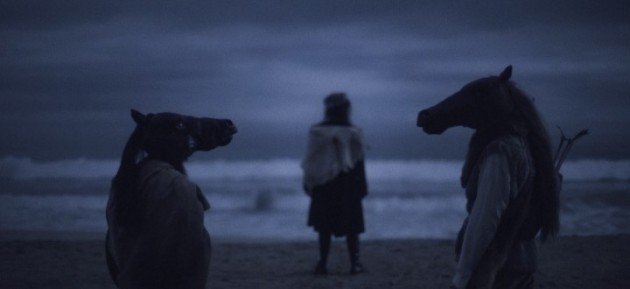
Rey
Niles Attalah’s Rey suffers from a similar reliance on arthouse clichés, proving that even cutting-edge avant-garde work can fall into easy conventions. The story centers around an obscure historical footnote, the attempt to claim Patagonia as a kingdom by a small French country lawyer. Attalah infuses this story with the type of colonial madness known to Herzog fans and presents it using a plethora of filmic tools from the presence of local First Nation non-actors to puppet-like costumes in courtroom scenes. The effect is not bad, it is simply less original than the film seems to think it is, so that in its hallucinatory climax, the mind is less blown, than parsing out the bevy of influences. Mind you, I don’t ask every film to be the next step in the evolution of cinema, but when a movie presents itself as avant-garde (its positioning in the” Les nouveaux alchimistes” section seems to indicate so), I expect more than a well-made survey of recent trends in experimental-leaning narrative cinema. The most interesting aspect of the film, however, is its use of archival footage (historical records and fiction films alike) to place the story in an imagined historicity of Latin America.
This use of archival footage is also a running theme in a few of the fest’s films. Gustav Deutch’s How We Live, for example, uses home movies extensively. Andrej Wajda, who is present in a small posthumous retrospective showcasing some of the masterpieces of his middle period like The Promised Land and Man of Iron, as well as some later work, uses archival images extensively in 2013’s Walesa. Man of Hope. That film, a pretty straightforward biopic of a charismatic man of the people turned political saviour and his long-suffering wife adheres pretty strongly to the codes of that subgenre, although it’s hard to fault Wajda since it has basically always been his project to document his native Poland in every filmic form imaginable, even in Hollywood-style biopic. Wajda has fun returning to the Gdansk strikes, however, playing around with the idea of old images as memory. Scenes of momentous historical moments can move between newsreel footage, to black and white, to colour “movie” image, indicating a certain porousness between the idea of History with a capital H and the individual focus of the film. Forrest Gump-style actor inserts into real footage achieve a similar effect of mediating the film’s relationship to lived history. Wajda even inserts scenes from his earlier Man of Iron, tying a nice loop in his cinematography and somewhat of a bow on his historical project. Poland will continue on, but it will miss its most passionate historian.
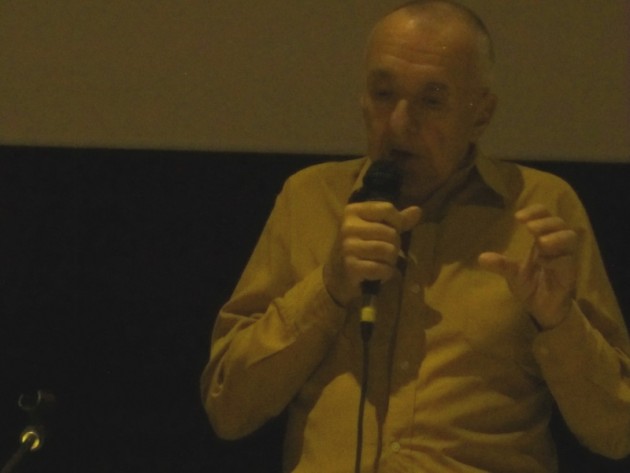
Gustav Deutch Introducing Film
The film that perhaps makes the most effective use of the concept of images as a form of history is Fernanda Pessoa’s tremendous essay film Stories Our Cinema Did (Not) Tell, a deep dive into Brazil’s tumultuous history through its most unknown film genre, the pornochanchada, a type of erotic comedies that dominated Brazilian screens in the 60s and 70s. Through nimble editing and judicious choice of clips, Pessoa is able to weave a complex commentary on Brazilian society under military dictatorship, jumping from capitalism to abortion, to homosexuality, to class and everything in between with a coherent fluidity that is impressive to behold. That she is able to do all this using clips from what most would consider cinematic junk is simply astounding and forces us to rethink our relationship to images, how we make them and how they make us, how the political makes its way into even the most unlikely of places.
Politics is at the center of a trio of longer works, Bangkok Nites (Katsuya Tomita, whose Saudade a few years ago had been a shot in the arm of the independent Japanese film scene), The Nothing Factory (Pedro Ninho) and L’héroïque Lande (Nikolas Klotz and Élisabeth Perceval), that impress in their varied approach to pressing questions plaguing Europe and Asia. All three works hover around the three hour mark (L’héroïque Lande is the longest at 219 minutes) and every minute seems necessary in their quest to tackle complex and vital issues. The breadth impresses, but it’s the nuance and desire to inspect their subject from every angle that really pushes these films into truly extraordinary territory.
L’héroïque Lande is perhaps the most straightforward of the three, composed as it is of interviews with various residents of the Calais “jungle” interspersed with more lyrical section (an early panorama of the camp set to a karaoke version of Rihanna’s Diamonds and the delicate, poetic ending are two standouts) and moments of vérité-style momentous scenes like the inevitable tearing down of the camp. Klotz and Perceval leave ample space for the various refugees to tell their story, filming them in empathic close-up, limiting edits so that the silences, repeated phrases and peculiarities of speech can emanate from the person. The important here is the person behind the headline, that some stories repeat themselves is of little importance when confronted with such raw humanity. The film is not only suffering, however, with the directors emphasizing the humour present, the sense of community and of ingenuity that permeates the camp (there is even a restaurant). A sensitive and humanist portrait of a humanitarian crisis, the film might test the resolve of some at its protracted length, but its message still resonates strongly.
The Nothing Factory concerns itself with the state of labour and socialism in neoliberal Europe. Telling the story of the closing down of a Portuguese metal factory and the attempts from its remaining employees to operate it in a just and ethical manner, the film multiplies narrative and filmic techniques to provide a wide-ranging portrait of the economic realities and possibilities of late capitalism. There are documentary sections, a late (surprising) song and dance number and even a discussion of socialism between aging European intellectuals that manages to actually be engaging (no small feat). The film inevitably gets compared with that other prolonged paean to Portugal’s recent economic woes, Arabian Nights (the films share a similar 16mm aesthetic, but The Nothing Factory is more restrained and less formally adventurous, but more intently focused on the human question, sketching more realistic characters), but what truly links them is the sense that they needed to explode conventional film forms to fully explore the questions they ask.
Bangkok Nites shares this breadth of approach in its exploration of economic disparity and power dynamics in East Asia, but is more novelistic in its expansive cast of characters, picaresque plot and central love story (alternate title Love in the Time of Late Capitalism). The story of a Thai prostitute working in Bangkok’s Japanese Red Light District and of her good for nothing on-and-off Japanese boyfriend (Tomita, boyish and affable), the film little by little builds a portrait of the economic realities, the remnants of colonialism and the obstacles to two humans loving each other in Asia in the 21st century. Those big questions place the movie more in line with large historical frescos a la Tolstoy, something bolstered by Tomita’s sure way with metaphors, extended time frame and deep-dive into its milieu. Bangkok Nites lingers in the mind for its willingness to adapt itself to its twisting story, both structurally and formally. Some might say there is a lack of an overarching design, of a directorial imprint, but I think this freedom of approach lends an unspoken cohesion to the film, the sense that we are entering a real living place with real living people. And this is ultimately what sticks with you after its three hours are gone, the moments of intimacy that are crushed by the realities of its cruel world, a final embrace on a beach in a starry night.
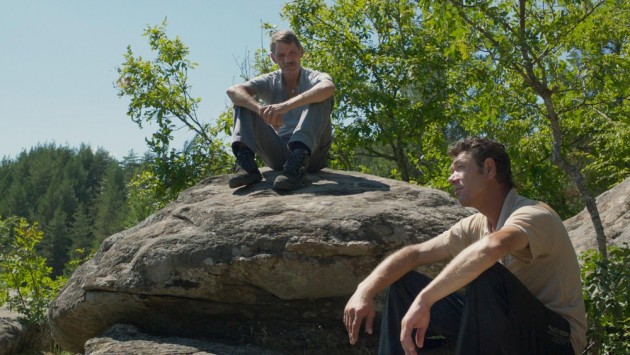
Western
Another standout of the fest, Valeska Grisebach’s Western, also concerns itself with the vestiges of capitalism and power dynamics between nations in its tale of German workers in a Bulgarian village and a loner who straddles both lines. Grisebach’s direction is assured, naturalistic, not documentary-like, which is just as constructed as anything else, but sticking to conventions of cinema (in that sense Grisebach fits with her peers of the Berlin school in using the tools of classical cinema to construct immersive reinterpretation of genre scenarios), letting the viewer in slowly into her world of men. She focuses on small gestures, body language, control of the frame, which coupled with her strong sense of place, lends the film a beguiling intimacy. This is a film of unspoken rules, macho posturing, perceived slights, but also of attempts at reconciliation. In that sense, it is a western, the wild West replaced by neoliberal Eastern Europe, as a place of opportunity to be conquered by strong civilised men when Germany no longer offers any work.
Conflict of a more tribal nature is at the center of Sheron R. Dayoc’s powerful Women of the Weeping River, the story of a blood feud amidst a Muslim community in the Philippines. Impressive mountain vistas which Dayoc’s camera traverses with graceful ease are the setting for this theater of vengeance and resigned pain. With strong direction that emphasizes place and the bodies within it, Dayoc builds a compelling tale filled with raw human emotions and the quiet strength of the women who try to make a change. Moments of magical realism bring a touch of the fantastic to the tense proceedings, lending the story a mythic quality.
Genre also has its special place at the festival in the form of the Temps 0 section that seeks to bring work that pushes the boundaries of genre to the attention of festival-goers. One way of doing this is by bringing in new perspectives from cinematographies less represented at festivals, and also from women. Honeygiver Among the Dogs, made by Dechen Roder, a Bhutanese woman, is a sort of Buddhist film noir, with its detective lead a femme fatale. The film is not perfect, it’s perhaps a bit too slow to get going and its hero is too much of a goody-two-shoe to draw us in to its tale of the murder of an abbess (classic noir heroes always had a flaw, an obsession that the case drew out). Apart from its gorgeous cinematography, the real point of interest in the film is how Roder reshapes the noir formula into a sort of Socratic dialogue on Buddhist ethics. Every crime story is something of a learning parable, the criminal teaching the detective how to catch him, sharing his view of the world. Roder makes this somewhat explicit in her twist ending and showcases her innate understanding of genre dynamics.
Marlina The Murderer in Four Acts, an Indonesian pulp neo-western from Mouly Surya, is more immediately satisfying in its controlled widescreen images of beautiful vistas, slow-burning violence and feminist leanings, if ultimately somewhat forgettable. A revenge drama of a widow who is visited by a group of thieves, the film understands the power of waiting, of building tension to moments of climactic violence. One gets the sense, however, that it’s following the post-Tarantino genre playbook a bit too closely. Local colour and peppered commentary on the place of women in Indonesian society does single out the film somewhat, and perhaps it is unfair to expect something totally different out of distant national cinemas. What we get is a well-made genre film from a place we rarely hear from.
Genre also has its masters, who are well represented in Temps 0 this year. Outrage Coda, Takeshi Kitano’s concluding chapter to the Outrage trilogy is pure yakuza goodness. The plot, all based around arcane rules of honour, perceived slights, backstabbing and bloody revenge, is really just a structure for Kitano to line scenes of frowning older Japanese men (what Kitano does here with wrinkles puts him in direct lineage with the great Flemish painters) with moments of ultraviolence. At certain points when Kitano is switching between close-ups of angry Yakuza chiefs lobbing tough-guy insults at each other or panning across a skewer of severe faces, the esteemed Japanese director achieves a degree zero of genre, every cut as if divinely ordered by a god of Yakuza flicks. At other times, the repetition can get grating with the film perhaps a tad too long. This is very niche entertainment (if you are delighted by the way “aho” sounds in the Kansai accent, this is the movie for you), but for fans of the series and those who can get on its wavelength, it is pure fun.
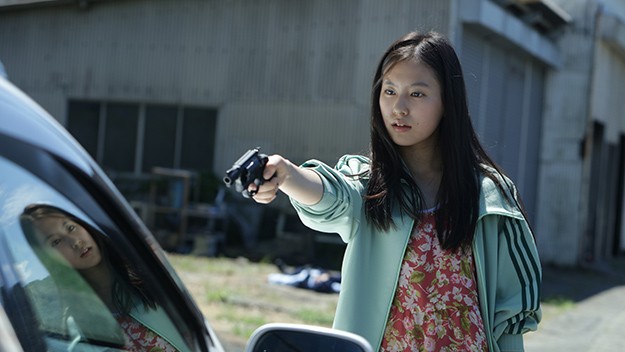
Before We Vanish
Kiyoshi Kurosawa, maybe the greatest filmmaker (in the sense of using the tools of cinema to transmit his ideas) working today, also has a new film. Before We Vanish sees the iconoclast director returning to a solidly b-movie scenario, an alien invasion. Of course it is Kurosawa’s art to pilfer schlocky scenarios for their underlying existential dread and he has a doozy here in this story of aliens who can take a person’s “conception”, like their understanding of family or work, from them. Kurosawa’s cinema is one of subtle shifts (his supreme masterpiece Cure is about a deadly idea after all), of empty spaces and half-lit mysteries. He’s able to inspire terror with a subtle change of light, to bring up dread with a character exiting the frame, to fill an empty frame with a palpable sense of unease and here he is able to suggest the depth of this loss with a close-up and a change of expression. One only wishes that he had explored this side of the scenario a bit more, but the idea itself is still terrifyingly pregnant. Somewhat new for him is the presence of a more assumed comedic element (there was always an off-kilter irony to even his scariest work), that sees the film hovering between existential and apocalyptic terror (a running theme in his oeuvre) and fish out of water comedy. The marriage is uneasy sometimes but as always with Kurosawa the strangeness of the ride is part of the appeal.
Let us then continue with two French works that take genre as their starting point, as a foundation on which to build elaborate stylistic digressions and in the same leap explore their creator’s obsessions. This is nothing new for Belgian duo of Hélène Cattet and Bruno Forzani, who after two forays into the obsessive’s genre par excellence, Giallo, return to the fest with their third film Let the Corpses Tan, their typically unhinged take on the Policier and Spaghetti Western genres. Over a thin plot involving a robbery, the duo drenches the proceedings in sex and violence with their usual emphasis on looking, unfolding over countless shout-outs. Their strategy of rapid editing and fetishistic close-ups is out in full-force from the beginning and builds into tense set-pieces and interesting directorial choices like movement being represented by ants on a map. Everyone is covered in sweat and blood by the halfway mark, however the film is less surprising than previous efforts, blunter, less sensual, perhaps in line with the extensive use of firearms, than their previous mysteries. Still a cinematic experience like few others, but less nuanced, less coiled around the compulsions of their creators.
This is not a problem found in The Wild Boys, Bertrand Mandico’s phantasmagoric debut. Mandico works in a style that will be familiar to fans of Guy Maddin, consciously trying to invoke the mysterious power of silent cinema. Mandico is more indebted to Von Sternberg and his woozy exoticism than Maddin’s soviet montage in its tale of ship-wrecked bourgeois delinquents. Thematically, the early portions of the film owe to Bataille and other decadent French writers in their extreme taboo-pushing sexuality, but Mandico quickly complicates this (we are not in the 1910s after all) in his emphasis on gender and intersex bodies. What emerges is a film with few conventional guiding points where both story and form take on this fluidity and liberating uncertainty, where the earth itself takes on bodily qualities and everything in the frame becomes a locus of haptic sensuality. We can only hope that Mandico will soon take us on another fantastic boat ride.
Franco-Japanese relationship (I might be stretching the segues at this point) are also well represented at this years FNC in the form of three films that bear the stamp of both (film) nations. La nuit où j’ai nagé a sweet fable of a young Japanese boy’s day of ditching school co-directed by Damien Manivel (who had impressed last year with The Park) and Igarashi Kohei, is slight but charming, following its character in silent vignettes. The directors beautifully capture the cold landscapes and the directionless wandering of the young boy.
Mutafukaz, co-directed by Shoujjrou Nishimi and Guillaume Renard and based on the latter’s graphic novel, is a work of arch-reference, blending anime, gangsta rap culture and luchadore wrestling in its almost hero’s journey. The two main characters, a bald black ball and a flaming skull voiced (in the French dub) by the pauvre type rap duo of Orelsan and Gingre, are nobodies in a city that meshes the worst of LA and New York into a cockroach infested nightmare of urban sprawl. Their lives get thrown out of whack by a shadowy conspiracy of black suited monsters. The film luxuriates in its geek culture trappings with a simple story that is enlivened by a propulsive pace and great animation, courtesy of Studio 4c, and given considerable charm by its working-class allegiances. If it’s ultimately pretty thin and by-the-book once its veneer of cultural gumbo is stripped away, it at least has the merit of having been an entertaining ride.
Finally, Summer Lights, a sort of loose reworking of Hiroshima mon amour by way of the Before trilogy, from Jean-Luc Périot (previously of A German Youth to reinvoke archival films) is a sensitive portrait of a day between two lost souls and of the weight of memory. Following a “documentary” sequence that acts as a tipping of the hat to Périot’s previous career, the film follows the chance meeting of a Japanese filmmaker expatriated to Paris and of an enigmatic woman. Built around their travels through Hiroshima and their gentle conversation, the movie charms in its low-key pace and focus on the small joys of the quotidian. The conversation does at times turn towards the somber subject of the Atom bombing, but only to support the strength of the survivors. The two leads bring a sunny tender warmth to their interactions that is reflected in the images and pacing of the film. A soft breeze of a film, high on pastoral beauty that will reward those who’ll walk alongside.
Some rapid fire reviews to close out this already too massive article. Unrest is a sort of greatest hits of Phillipe Grandrieux’s experimental preoccupations. It is good, especially the first sequence that overlays foliage over a naked woman masturbating, and striking in its evocation of the body, but nothing new from the director. Samui Song (Pen-ek Ratanaruang) is most interesting when the director is playing with tropes of Thai art cinema (Weerasekathul, of course, but also Anocha Suwichakornpong) to complicate his fairly standard film noir plot (a late twist is pretty obvious when read in genre terms but had me fooled because of its use of art cinema iconography). The Starry Sky Above my Head (Ilan Klipper), is a fun inventive, chamber comedy, that explodes its neurotic critique with a climactic house party. Félicité (Alain Gomis) comes alive in its musical moments that tie together entire communities of people. Otherwise it splits its time between Dardenne-like bodies against forces of society scenes and oneiric passages. It sadly loses its footing in a directionless third act, but remains a strong portrait of a stubborn woman in modern day Congo. Closeness (Kantemir Balagov) is compelling in its tragic themes of family and responsibility, but its theatrical staging and untasteful snuff film sequence brings it down. Finally, Seijun Suzuki is the recipient of a small retrospective. Gate of Flesh is an all-out masterpiece of colour, sex and passion that explodes onto the screen like few other films this year did. Detective Bureau 2-3 is Suzuki working at half lunacy, which is still great in its swinging sixties bravura and flights of fancy.
And with this another year passes at Montréal’s Festival du nouveau cinema, a strong selection of films that took us around the globe and introduced us (or reintroduced us) to many new voices and let us spend time with old friends. I won’t leave you with any comments on the state of movies in 2017, even with all the films FNC showed, it remains but a fragment of what is being produced and no doubt countless gems have not made the trip to Montréal (Lucrecia Martel’s Zama is the one that hurts the most). All I can say is that any event that lets you build a double-bill of Kurosawa and Suzuki is worth a stop.
Featured Image from Summer 1993



